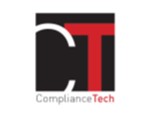Les fiches récentes
1 février 2022
Base Documentaire : Soft Law
► Référence complète : Plan de vigilance 2022 du Groupe SNCF, février 2022.
____
_____
26 janvier 2022
Enseignements : Droit de la régulation bancaire et financière, semestre de printemps 2022

► Résumé de la leçon n°1 de droit de la régulation bancaire et financière : La "Régulation" ne se confond pas avec la "réglementation". Elle constitue un "Droit" spécifique, dont la "réglementation" n'est qu'un outil, comme le sont les lois, les décisions de justice, etc., qu'ils prennent la forme d'actes obligatoires (hard Law) ou s'adressent simplement à ceux qui sont concernés (soft Law). La "Régulation" ne se confond pas davantage avec la "Supervision", avec laquelle elle se cumule souvent, comme ici en matière bancaire et financière. Ainsi, en-deçà des multiples Codes, par exemple le Code monétaire et financier, ce sont avant tout les Autorités de régulation et de supervision qui fabriquent et font vivre ce "Droit de la Régulation bancaire et financière", à travers non seulement textes et décisions, mais encore leur doctrine, souvent exprimée par des communiqués et lignes directrices, qui ont souvent plus d'impacts que les textes eux-mêmes.
Il convient donc de débuter par les institutions françaises : l'Autorité des marchés financiers (AMF) et l'Autorité de contrôle prudentiel et de résolution (ACPR).
Ces autorités sont elles-mêmes ancrées dans le système juridique français et ont des relations entre elles mais elles sont et entremaillées au niveau européen et s'insèrent en outre dans des relations internationales constantes. Il est impossible de les appréhender indépendamment de ces différents ancrages, notamment le système juridique français, lequel se déploie entre les deux ordres de juridictions, juridictions judiciaires et juridictions administratives, substantiellement unis autour des principes constitutionnels, et s'ancre dans l'ordre de l'Union européenne. Mais de fait, parce que la banque, et plus encore la finance, ne sont pas contenues dans les frontières des systèmes juridiques, le Droit américain, plus proche du Droit britannique (Common Law) que du Droit européen continental (Civil Law) dont la France et l'Allemagne demeurent l'expression, sont la source première d'influence.
Après avoir fixé quelques définitions et avoir rappelé le raisonnement privilégié en Droit de la Régulation, prenant l'AMF puis l'ACPR, la première partie de la leçon décrit de l'AMF, qui succéda à la COB, née en 1967 par copie de la SEC américaine, suppose que l'on expose son statut, sa composition, ses pouvoirs et les contrôles dont elle est l'objet. Cette description institutionnelle vise à faire comprendre ce à quoi cette institution sert, c'est-à-dire ses missions : cela correspond à la définition même du "Droit de la Régulation", branche du Droit téléologique, c'est-à-dire définie par ses finalité (ce qui n'est pas la façon classique de définir une branche du Droit). C'est en raison de sa finalité, à savoir la préservation de l'équité, la transparence et la liquidité des marchés financiers, ce qui lui permet de protéger l'épargne publique, que l'on comprend pourquoi l'AMF est consubstantiellement indépendante (règle de valeur constitutionnelle, sur laquelle nous aurons l'occasion de revenir).
De nombreux modèles institutionnels existent et on les expérimente les uns après les autres. Le secteur des banques et des assurances continue d'être régulé par une Autorité administrative adossée à la Banque de France, l'ACPR, dont il convient de faire une semblable description. L'on y voit une grande similarité institutionnelle, ce qui permet de mesurer ce qui fait la différence en Droit entre le secteur bancaire et le secteur financier.
____
🔎 Regarder les slides servant de base à la leçon n°1 relative aux institutions bancaires et financières de régulation et de supervision.
🔎 Revenir aux bases avec le Dictionnaire bilingue du Droit de la Régulation et de la Compliance.
🔎 Approfondir par la Bibliographie générale du Droit de la Régulation bancaire et financière
Utiliser ci-dessous les matériaux pour aller plus loin et préparer votre conférence de méthode⤵️.

19 janvier 2022
Organisation de manifestations scientifiques

► Référence complète : M.-A. Frison-Roche, Organisation scientifique et modération de la conférence L'office du juge et les causes systémiques, in Cycle de conférences, Penser l'office du juge, Grand Chambre de la Cour de cassation, 9 mai 2022, 17h-19h.
____
► Présentation générale de la conférence : la conférence repose sur l'intervention de trois juges, Christophe Soulard, Fabien Raynaud et François Ancel, qui réfléchissent et débattent entre eux sur une hypothèse : l'existence de "causes systémiques". L'hypothèse est qu'au-delà et à travers la diversité des contentieux et des causes qui sont soumises aux juges les plus divers, il existe une catégorie de causes qui ont en cause d'être systémiques, c'est-à-dire de contenir dans ce qui est soumis au juge pour résolution un système. Si une telle catégorie existe, ce qui pose d'ailleurs la question de la diversité des systèmes et la difficulté née de leur soumission à des règles qui ne sont pas juridiques (par exemple des "lois" économiques, biologiques, financières, etc.), alors le juge devrait en tenir compte, et dans la procédure et dans le jugement qu'il porte sur la cause et dans la façon dont il restitue ce jugement.
____
📝Voir la présentation de la conférence par la Cour de cassation
📝Voir le programme du cycle de conférences 2022
____
🎥Voir la vidéo de l'ensemble de la conférence
🎥 Voir la vidéo de la synthèse de la conférence réalisée sur le vif par Marie-Anne Frison-Roche
____
✏️lire les notes prises sur le vif pour opérer la synthèse de la conférence
____
📝Lire l'article de Marie-Anne Frison-Roche rendant compte au Dalloz de la conférence (9 juin 2022)
____
► Lire les deux travaux de coordination de la conférence par Marie-Anne Frison-Roche
🚧 lire le document de travail L'hypothèse de la "cause systémique, réalisé préalablement à la conférence, pour préparer celle-ci.
📝lire les notes pour opérer la synthèse de la conférence
________

5 janvier 2022
Publications

♾️suivre Marie-Anne Frison-Roche sur LinkedIn
♾️s'abonner à la Newsletter MAFR Regulation, Compliance, Law
____
► Référence complète : M.-A. Frison-Roche, Droit de la Compliance et Climat. Pour prévenir le risque et construire l'équilibre climatiques , janvier 2022.
, janvier 2022.
____
🎤 Ce document de travail a été élaboré pour servir de base à une intervention dans le colloque qui s'est tenu sous la direction de M. Torre-Schaub, B. Lormeteau, et A. Stevignon, Les risques climatiques à l’épreuve du droit Comment le droit fait-il face aux nouveaux risques engendrés par la crise climatique ? , à l'Université Panthéon-Sorbonne (Paris I), Amphithéâtre Liard, le 17 mars 2022.
----
📝Il sert également de base à un article : "Droit de la compliance et climat. Pour prévenir le risque et construire l'équilibre climatiques".
____
► Résumé du document de travail : Le Droit de la Compliance commence à se manifester en matière climatique et l'on parle de Droit de la compliance climatique, mais la question climatique n'est elle-même que l'exemple le plus parfait de ce pour quoi le Droit général de la Compliance est fait. Il s'agit en effet d'une branche du Droit nouvelle, d'un Droit global ayant la prétention d'apporter en Ex Ante des solutions ici et maintenant pour des sujets globaux, afin qu'à l'avenir des catastrophes systémiques ne se réalisent pas : ce sont ces "Buts monumentaux" qui donne sens, cohérence et simplicité au Droit de la Compliance.
Celui-ci, lié à l'État de Droit, permet de dépasser le choix souvent présenté entre l'efficacité de la protection de la planète et le renoncement aux libertés, notamment la liberté d'entreprendre et la liberté des personnes, de la protection de leurs données.
Le Climat est ainsi exemplaire des Buts Monumentaux du Droit de la Compliance (I). Le risque systémique qu'il constitue désormais est analogue aux risques systémiques bancaire ou numérique et appelle donc l'application des instruments juridiques identiques, anciennement mis en place pour la banque, inventés récemment pour le numérique. Le Droit de la Compliance, en ce qu'il prolonge le Droit de la Régulation, en se dégageant de la condition préalable du Secteur et du Territoire, est en effet la branche qui permet de mettre en place des solutions juridiques nouvelles, soit de force (convention judiciaire d'intérêt public, programmes de compliance, etc.), soit de gré (engagements, chartes globales, etc.).
S'opère ainsi une alliance entre Autorités politiques, publiques, et opérateurs économiques cruciaux (II), que la montée en puissance de la "raison d'être" exprime et dont l'enjeu technique est la collecte d'informations qu'il faut corréler. Les scientifiques mettant en commun une information, bien public, apportée par les entités publique et privée. Les juridictions sont alors au centre d'un Droit dont l'objet est l'Avenir.
____
🔓lire les développements ci-dessous⤵️
____
4 janvier 2022
Enseignements : Droit de la régulation bancaire et financière, semestre de printemps 2022

Ce livret de cours décrit le contenu, la méthodologie et les objectifs du cours magistral de Droit de la Régulation bancaire et financière., tel qu'il se déroule au semestre de printemps 2022.
Le cours magistral est assuré par Marie-Anne Frison-Roche, agrégée des Facultés de Droit et professeur des Universités, titulaire à Sciences Po.
Autour de ce cours, des conférences sont assurées par des maîtres de conférence réunis dans une équipe pédagogique coordonnée par la professeure d'amphi.
Pour faciliter l'assimilation des techniques juridiques articulées à des techniques économiques et financières, Marie-Anne Frison-Roche met à disposition un Dictionnaire bilingue de Droit de la Régulation et de la Compliance. Si des notions juridiques utiles pour les étudiants s'avèrent n'être pas visées dans le Vocabulaire juridique Cornu, ouvrage de référence disponible à la bibliothèque, des nouvelles entrées pourront être insérées par MAFR à leur demande.
____
Le livret détaille la façon dont les étudiants, qui suivent cet enseignement, situé dans le semestre de printemps de la première année du Master Finance et Stratégie de Science Po, sont évalués afin de valider ce module. Il précise la charge du travail requis.
Cet enseignement conçu et fondé par Marie-Anne Frison-Roche il y a plus de 10 ans était réparti entre 24 heures de cours d'ampli et 24 heures de conférence. La direction de l'École ayant demandé en 2019 la réduction du volume global de cet enseignement, il a été décidé de réduire plutôt le volume du cours d'amphi afin que les conférences, par nature plus interactives, ne soient pas amputées.
Les 12 leçons de cours d'amphi, désormais archivées, ont été remplacées par 6 leçons. Celles-ci débutent immédiatement, l'introduction générale ayant été supprimée. Elles ont été rassemblées autour de ce qui touche directement la matière (ainsi le Droit des contrats ou le Droit de la concurrence sont des thèmes désormais non-traités) afin que les conférences ne soient pas trop affectées par cette réduction. Pour ceux qui voudraient avoir une idée de ces thèmes, néanmoins assez important en matière financière, il convient de se reporter à la documentation telle qu'elle était disponible en 2018 : plan général, ensemble des résumés ; documentation ; références techniques ; slides, pour appréhender tout ce qui ne sera pas vu dans cette présente configuration.
À première vue, le cours d'amphi se déroulant à partir de fin janvier 2022, les conditions sanitaires rendront supportables un cours d'amphi en présentiel en raison d'une distance suffisante entre la professeure et les étudiants. Le cours se déroulera donc semaine après semaine. Si les conditions sanitaires ne rendaient pas cette perspective raisonnable, il est concevable que l'ensemble de ces 6 leçons soient mises à la disposition des étudiants immédiatement pour qu'ils puissent travailler avec une vue d'ensemble cette matière juridique, qui est pour certaines complètement nouvelle, avant même de commencer leur conférence . De toutes les façons, puisque les étudiants sont disponibles en janvier 2022, l'ensemble de la documentation a été rassemblée pour que les supports généraux d'une part et les supports particuliers à chaque leçon soient disponibles début janvier, afin que les étudiants puissent s'ils le veulent utiliser leur temps disponible pour commencer à étudier par eux-mêmes la matière dans un premier tour d'horizon, par des lectures, voire en regardant par avance les slides qui ont été élaborées d'une façon détaillées à cette fin.
Les thèmes des 6 leçons qui composent le cours d'amphi sont énumérés dans un plan général, qui restitue la cohérence entre chacune de ces 6 leçons, dans les liens qu'elles ont les unes avec les autres.
Cela permet alors aux étudiants de travailler immédiatement, notamment parce que chaque leçon s'appuie sur des références afférentes à chaque thème et un ensemble de documents et de lectures, rassemblées dans un Thesaurus, constitués pour eux par Marie-Anne Frison-Roche.
D'une façon plus globale, une bibliographie générale, permet à tous les étudiants de préparer les exercices qui leur sont demandés en parallèle dans les conférences, puisque le travail de coordinations de l'équipe pédagogique permet à la fois à chaque conférence de conserver son originalité et d'avoir des points de contact avec le cours d'amphi.
Il convient de consulter très régulièrement les sites des Autorités de Régulation et de Supervision, française, européenne, étrangère et internationales, car elles expriment la doctrine juridique de celle-ci. Cela permet de comprendre que le Droit ne se réduit pas à la Réglementation. De la même façon, la lecture des journaux permet de mesurer la place centrale des décision des tribunaux en la matière. Les réflexes juridiques (et non pas la connaissance mécanique de la "réglementation") sont un atout essentiel pour toute perception stratégique et ces lectures permettent de le comprendre.
Pour suivre au jour le jour l'actualité en matière de Droit de la Régulation et en Droit de la Compliance, le plus simple est peut-être de suivre sur LinkedIn la Newsletter MAFR – Law, Compliance, Regulation ou/et de suivre le profil personnel de Marie-Anne Frison-Roche sur ce réseau professionnel.
Lire une présentation détaillée de l'enseignement ci-dessous⤵

24 décembre 2021
Publications

🌐 suivre Marie-Anne Frison-Roche sur LinkedIn
🌐s'abonner à la Newsletter MAFR Regulation, Compliance, Law
____
 ► Référence complète : M.-A. Frison-Roche, Concevoir le pouvoir, document de travail, décembre 2021
► Référence complète : M.-A. Frison-Roche, Concevoir le pouvoir, document de travail, décembre 2021
____
📝 ce document de travail sert de base à un article à paraître dans les Mélanges élaborés en hommage à Emmanuel Gaillard.
____
► Résumé du document de travail : En 1985, l'œuvre d'Emmanuel Gaillard sortit sous le titre Le pouvoir en droit privé 📎!footnote-2418, mais lors de sa soutenance en 1981, sa thèse dirigée par le Doyen Cornu avait pour titre La notion de pouvoir en droit privé 📎!footnote-2419.
Redonnons pleine force au titre originel du travail de thèse.
La suppression du terme notion suppose peut-être qu'en définissant quelque chose l'essentiel est fait, qu'il y aurait comme un pléonasme en visant La notion de pouvoir et Le pouvoir, le Droit aimant faire économie de mots.
Mais c'est bien une conception renouvelée, plus simple et plus puissante de la notion de pouvoir, contenant ainsi tout le régime nécessairement imputé, que cet ouvrage imposa, éclairant désormais le droit positif. Tandis qu'à l'inverse la définition qu'en offrit Emmanuel Gaillard excède le Droit privé. L'on aurait volontiers plaidé pour conserver l'exergue du terme Notion, proposant plutôt de se libérer de la mention du seul droit privé ....
Peut-être était-ce parce que la notion est immense que dans cette recherche fondatrice son emprise fut restreinte au droit privé, l'auteur devant déjà rendre compte de la lourde multiplicité des manifestations dans cette partie-là du Droit ; ou bien était-ce parce que la notion de "pouvoir" étant si familière au Droit public qu'elle aurait eu dans celui-ci moins besoin de définition (d'ailleurs si diversement proposée dans cette zone plus politique, qui veille déjà par principe à distinguer les pouvoirs, ceux-ci devant toujours être pluriels afin d'être séparés), et qu'il était donc raisonnable de vouloir parvenir à une seule notion de pouvoir dans ce Droit privé où le droit subjectif est plus familier.
Pourtant la définition élaborée par Emmanuel Gaillard de la notion de pouvoir comme ce qui est une prérogative remise, par la loi ou le contrat, entre les mains de celui qui en est investi au bénéfice, au moins partiel, d'autrui, rend compte aussi bien du Droit public que du Droit privé. Cela participe même à la solidité de cette thèse et explique sa prospérité aujourd'hui dans un Droit où la distinction entre le Droit privé et le Droit public s'affaiblit.
La puissance de cette définition tient à sa simplicité. Les esprits simples et braves sont souvent les plus fructueux. Comme le souligne Gérard Cornu dans sa préface, l'auteur, notamment parce qu'il s'appuie davantage sur du droit positif, par exemple celui relatif aux pouvoirs des mandataires sociaux, ne s'abîme pas dans des discussions entre des auteurs pour finir par préférer plutôt l'un que l'autre. Il arrive à une définition proche de celle de notre expérience quotidienne : celle que nous connaissons lorsque nous retirons un pli pour autrui et que le préposé nous demande à quel titre nous prétendons faire cet acte en son nom. Nous lui montrons alors notre "pouvoir", cette puissance juridique de le faire pour le bénéfice de celui auquel est adressé le courrier et pouvons ainsi exercer la puissance de retirer la missive, pourtant personnelle. Quand le sens juridique et le sens commun se rejoignent, c'est de bon augure, non seulement sur la forme parce que chacun peut le comprendre et que le Droit doit rester chose compréhensible mais encore sur le fond parce que chacun doit pouvoir contrôler l'exercice d'un pouvoir qui se concrétise pour et sur autrui. Car cette lettre qui s'adresse à autrui, celui qui a pu la prendre par le pouvoir qui lui en a été conféré, pourrait ainsi aussi bien la décacheter et la lire puis la détruire ou la donner au pire ennemi de celui auquel elle était adressée. Dans le pouvoir, il y a toujours la puissance, et le danger pour autrui que celle-ci contient.
Cette définition très juridique de ce qu'est le pouvoir met à distance non seulement le titulaire de son propre intérêt mais encore cela canalise la puissance qui lui est ainsi accordée vers celui qui en bénéficie. En cela, non seulement Emmanuel Gaillard distingua le pouvoir et le droit subjectif, mais il cerna le juste volume de puissance requis pour que ce pouvoir remplisse effectivement cette "mission", à travers la notion d'abus de pouvoir, lorsque le titulaire utilise pour d'autres bénéficiaires cette puissance qui ne lui fut conférée que pour cela.
Plus encore, cette conception permet de distinguer le pouvoir de la force discrétionnaire, car le titulaire du pouvoir exerce de ce fait une puissance, en agissant pour autrui, en décidant pour autrui, en décidant sur autrui. Parce que le pouvoir est indissociable de la puissance mais que la puissance doit rester le moyen du pouvoir et pas davantage, le Droit va produire les anticorps que sont non seulement la théorie de l'abus de pouvoir mais encore une responsabilité si forte que des comptes doivent toujours être rendus, soit à cet autrui pour lequel tout est fait soit devant un tiers. Car ce troisième est souvent là et dès le départ, le juge des tutelles par exemple : car le pouvoir fut mis en place en raison de la faiblesse du bénéficiaire, en lui-même et par la situation, il faut donc un tiers, impartial et désintéressé pour, dès le départ, veiller à la bonne exécution, sans même qu'il y ait litige. En cela, comme cette thèse est utile pour penser ce qu'est aujourd'hui la Supervision !
Cette thèse si nette, si simple et si forte dépasse le droit civil. Elle est à la fois beaucoup plus restrictive que la définition plus factuelle et politique de ce qu'est le pouvoir, qui serait la possibilité de faire quelque chose, et beaucoup plus ample que les définitions usuelles puisqu'elle embrasse et légitime de jure toutes les situations où une personne va agir juridiquement pour le bénéfice d'autrui. Le Doyen Cornu montre d'ailleurs en deux phrases qu'une telle notion de pouvoir restitue aussi bien l'office du juge, qui n'a de pouvoir sur autrui que pour le servir 📎!footnote-2420. La définition correspond à la mission de celui qui n'a de puissance que pour remplir son office. Cela convient si bien à la conception que nous avons aujourd'hui de l'administration, surtout si elle prend la forme d'autorités indépendantes.
Plus encore le pouvoir contient ainsi dans sa définition même sa propre limite, puisqu'autrui y est présent : le titulaire n'a de puissance que pour servir autrui. Dès lors, ce n'est une puissance que parce que c'est une sorte de charge. Emmanuel Gaillard utilise immédiatement le terme : "Un individu se voit confier une charge qu'il exerce dans un intérêt au moins partiellement distinct du sien propre" 📎!footnote-2422. Il se réfère d'ailleurs souvent au tuteur, dont Carbonnier, qui en réforma le Droit en la matière 📎!footnote-2456, souligna que pèse sur lui une charge publique puisque l'État lui confie un enfant. De la même façon l'autorité parentale est une charge des parents au bénéfice des enfants. D'une façon plus générale, le pouvoir est une charge que le Droit fait peser sur une personne afin qu'elle satisfasse les intérêts d'un autre.
Cette définition offerte par Emmanuel Gaillard en 1981, ancrée dans le Droit civil qu'en ce que celui-ci est le Droit commun des systèmes juridiques, est prémonitoire du Droit de la Régulation et de la Compliance, tel qu'il se déploie aujourd'hui. Il suffirait de continuer les phrases, comme si elles avaient été à demi-écrites, pour les finir 40 ans plus tard et y trouver les mécanismes de Supervision des autorités publiques sur les entreprises qui sont désormais en place non pas pour réduire leur pouvoir mais pour s'assurer en permanence qu'elles l'exercent bien au bénéfice d'autrui 📎!footnote-2457. Toute l'évolution du Droit des sociétés, du Droit financier est là. L'on voit aussi entre les lignes de l'ouvrage qui développe la notion de devoir 📎!footnote-2421, ce que le droit positif élabore aujourd'hui à travers notamment le "devoir de vigilance", cette charge personnelle au bénéfice d'autrui (I).
La définition du pouvoir ainsi conçu contient en elle-même son régime et permet de mieux l'anticiper aujourd'hui : parce que le titulaire n'exerce le pouvoir que pour autrui, au moins partiellement, il doit consubstantiellement en rendre compte, la responsabilité, n'étant qu'une forme de cette accountability ; parce que ce service doit être effectif et qu'autrui doit en bénéficier pleinement, car contrairement au droit subjectif qui permet au titulaire de librement de ne pas user de sa puissance, le pouvoir n'a jamais été la "plus absolue" disponibilité d'user de sa puissance : il est même l'inverse. Il est l'expression d'une puissance affectée à un but, contraignant le titulaire à utiliser sa puissance à cette fin. Mais il faut pareillement que ce titulaire ait toute la puissance pour le faire, car sinon la notion même de "pouvoir" n'a plus de sens. C'est la définition qu'il convient de donner au principe de proportionnalité : celui sur lequel pèse le pouvoir doit avoir plus de puissance qu'il n'est nécessaire mais toute la puissance nécessaire pour atteindre le but pour lequel ce pouvoir lui a été remis afin qu'autrui en tire plein bénéfice (II).
Dans le droit positif d'aujourd'hui, l'on retrouve la définition du pouvoir comme un devoir, non seulement en Droit privé mais encore en Droit public, notamment parce que les puissances pures, c'est-à-dire ne rendant pas compte de l'usage de leur puissance, régressent tandis que le souci d'autrui s'accroît. Le temps des pouvoirs discrétionnaires est révolu, l'indépendance accrue de ceux qui exercent du pouvoir sur autrui exigeant qu'ils rendent des comptes. Au-delà de cette reddition des comptes, la responsabilité personnelle de celui qui a le pouvoir de servir autrui est en train de se mettre en place. Mais, sans doute parce que le Droit est lent à se mouvoir, l'idée corrélative comme quoi le titulaire du pouvoir doit avoir toute la puissance requise pour mener à bien sa mission est quant à elle moins ancrée : le Droit n'a donc fait qu'une partie du chemin en sanctionnant les excès du pouvoir, comme le montra Emmanuel Gaillard, quand le titulaire utilise sa puissance à d'autres fins, mais n'a pas encore clairement posé que le titulaire - parfois forcé - d'un pouvoir est légitime à utiliser tous les moyens requis pour atteindre le résultat pour lequel un pouvoir, c'est-à-dire une charge et un devoir, lui a été conféré.
Sans doute faut-il lire une nouvelle fois la thèse d'Emmanuel Gaillard dans toutes ses potentialités, pour en imaginer la lecture que nous pourrions aujourd'hui faire de ce qu'il aurait pu écrire comme sur des pages blanches qui s'écriraient toutes seules, une thèse magique où tout est déjà là, une thèse si courte (250 pages) et si belle, si dense qu'elle contient déjà le Droit qui vient. Droit de l'Avenir 📎!footnote-2458 où il y doit y avoir beaucoup plus de responsabilité au bénéfice d'autrui📎!footnote-2423 et de pouvoirs puisque cette notion inclut autrui qui en est le bénéficiaire. Droit de l'Avenir où Emmanuel Gaillard sera présent, notamment grâce à ce travail de doctrine offert en 1981. Pour que, concrètement ceux que l'on charge de veiller sur autrui, par exemple aujourd'hui toutes les entreprises contraintes par le Droit de la Compliance de veiller sur autrui afin que celui-ci ne soit pas anéanti par la haine dans l'espace numérique, par la corruption dans le système économique ou par le changement climatique dans un futur projeté, ne se voient pas contester par le même Droit les moyens d'exercer au profit d'autrui ce pouvoir, par exemple lorsque cela implique de "juger". Puisque le doyen Cornu lui-même soulignait l'identité des deux offices.
____
Lire les développement ci-dessous⤵️
21 décembre 2021
Compliance : sur le vif

<iframe src="https://www.linkedin.com/embed/feed/update/urn:li:share:6878948135314583552" height="730" width="504" frameborder="0" allowfullscreen="" title="Post intégré"></iframe>
6 décembre 2021
Conférences

🌐 suivre Marie-Anne Frison-Roche sur LinkedIn
🌐s'abonner à la Newsletter MAFR Regulation, Compliance, Law
____
► Référence complète : Frison-Roche, M.-A., "Cas climatiques, devoir de vigilance, pouvoir des juges", dans la participation à la table rond "Notre planète brûle ; quels leviers d'action pour les entreprises et les Etats ?", in Paris Legal Makers, 6 décembre 2021.
____
► Consulter le programme général de la manifestation
____
► Revoir la vidéo de la table-ronde
____
► Résumé de l'intervention : Le débat d'une heure a porté sur les enjeux climats et la façon dont ceux qui font le Droit peuvent contribuer aux réponses que les entreprises et les État y apportent.
A ce titre et interrogée précisément par la journaliste sur le mouvent, j'ai mentionné que la population du monde entier s'adresse directement aux tribunaux qui ne les accueillent et appliquent un Droit en formation dans des législations à portée globales. Pour ne prendre que l'année 2021, dans des décisions sensationnelles, le Tribunal constitutionnel allemand dans sa décision du 29 avril 2021 a déclaré une loi votée par le Parlement allemand contraire à la Constitution, alors même qu'elle avait pour objet la lutte contre le changement climatique car elle laisse ouvert la possibilité pour l'État de ne rien faire avant 2030, alors même que les études scientifiques ont établi que l'inaction totale était l'assurance de la catastrophe climatique. L'alliance de la science et du Droit, la reconnaissance des droits subjectifs présents des générations futures (puisque leur sort aurait donc pu être déjà scellé) a conduit à cette solution.
Le mois suivant, le Tribunal de La Haye a condamné le 26 mai 2021 l'entreprise Shell à réduire de 45% ses émissions émission de gaz à effet de serre d’ici 2030, puisqu'elle s'y était engagée dans ses documents publics. En s'appuyant sur les textes de responsabilité, c'est une responsabilisation de l'entreprise et non pas un dédommagement pécuniaire : c'est de l'action concrète future qui est requise.
Le mois suivante, le Conseil d'État français dans sa décision Grande Synthe s'est appuyé sur la reprise par la France dans sa législation (loi de programmation) des Accords de Paris pour lui enjoindre de respecter sa propre législation, en suivant sa "trajectoire", la notion de transition étant nécessaire dans les questions climatiques et le Droit de la Responsabilité Ex Ante qui est en train de se mettre en place.
La suite du débat a mis en lumière l'importance du nouveau "devoir de vigilance" qui pèse sur les entreprises, notamment dans les enjeux climatiques.
Interrogée sur ce point, j'ai relevé que le Ministre des Affaires étrangères avait lui-même en ouverture de la journée souligné l'importance de la loi dite "Vigilance" de 2017 et de la prochaine directive en la matière. Effectivement, c'est un devoir qui engage une responsabilité, dont le Conseil constitutionnel a souligné qu'elle était personnelle et non pas pour autrui.
C'est à court terme une mauvaise nouvelle pour les entreprises mais à moyen ou long terme c'est aussi un moyen pour elles de jouer un rôle au niveau global, d'assurer un rôle plus important, d'obtenir des informations de la part des entités dont elles répondent, de changer de niveau, de faire une alliance avec les Autorités publiques et politiques. C'est cette nouvelle Compliance, notamment environnementale, calquée sur la loi dite "Sapin 2", qui n'est qu'un exemple du Droit de la Compliance, lequel est le Droit du Futur, le Droit par lequel le Futur est appréhendé par l'action, l'obligation d'agir ou la volonté d'agir.
Il est vrai que cela change leur gouvernance, notamment dans l'organisation probatoire, puisque les personnes qui leur demande des comptes n'ont plus la charge que de la "vraisemblance" et non plus tant de la preuve, et c'est un nouveau système probatoire qui se met en place, où les legal makers ont toute leur place dans le quotidien des entreprises.
Les Juges interviennent à la demande directe de la population. On leur reproche de répondre mais on leur en voudrait sans doute de ne pas le faire, ils veillent à toujours se référer aux "engagements" soit des entreprises (Shell), soit des Etats (Grande Synthe) ; sans doute anticipent-ils les textes de demain, qui arrivent (comme la directive sur la vigilance).
________